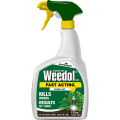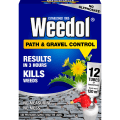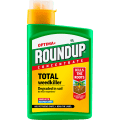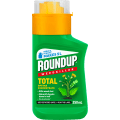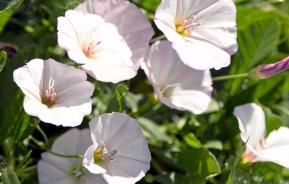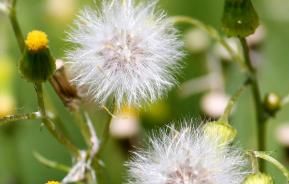Unlike annual weeds, perennial weeds are big and invasive, rooting themselves firmly into your garden landscape, unless you do something about it now…
If only all weeds were annual weeds. These produce thin, flimsy fibrous roots and it’s so easy to get rid of them by some gentle hoeing action carried out a couple of times a week. Severing them causes the weeds and roots to die.
But they’re not. The most obnoxious and difficult to control ones are the thug-like perennial weeds. These produce big, fat perennial roots that store food reserves to keep them going from year to year to year.
There are two main types:
- Deep-growing taproots of weeds like dandelions
- Wide-travelling, horizontal roots of weeds like bindweed, ground elder and couch grass.
Yes, these perennial weeds can be hoed to remove the top growth – the leaves and stems, which may weaken them slightly. But, because of their perennial roots, they will just keep coming back – and back… You would have to hoe them at least once every day for a year or more if you wanted to kill them completely this way! So, they need another, different approach.
Dig for victory
You could start by digging them out with either a spade or a trowel, hand fork or specialised weeding tool. This is often the best initial approach, especially when there are large infestations.
Just remember to remove every bit of perennial root you see, as even the smallest pieces left in the ground will grow into a new plant, and start the colonisation of your garden all over again.
Spray for ease
Probably the easiest way to deal with these perennial thugs is to spray them with a systemic weedkiller based on glyphosate. Systemic weedkillers kill from the inside out. When sprayed onto the leaves, they are absorbed inside and then move all around the plant to kill the whole plant – and yes, including those pesky perennial roots. Find out more about how weedkillers work and how to use them
Patience is a virtue – and an essential
This absorption into the leaves does take some time, so you need to have something that many gardeners are famous for not having – patience! The initial signs that something has happened can normally be seen within 7 to 10 days, as the leaves start to turn yellow and die back. Complete control and dieback usually take place in 2 to 4 weeks. So sprayed weeds should be left undisturbed for at least a week – but, wherever possible, waiting until they are completely dead is usually best.
Tips for better control
- Systemic weedkillers work best when the weeds are actively growing – which helps circulate the chemical inside the plant – usually from April to September, depending on the weather and temperature.
- The more leaves the weed has and the bigger they are means there is a larger surface area to spray, and so more weedkiller can be applied and consequently absorbed. Weeds with big root systems need a reasonable amount of weedkiller to kill them completely, so spray when they have a lot of fully open leaves.
- In summer, spraying when the sun is shining, means that most of the weedkiller simply evaporates and doesn’t have a chance to be fully absorbed. Waiting until the evening, when it is cooler, means more chemical will be taken up by the leaves.
- The effectiveness of weedkillers be reduced if it rains within 6 hours of application, so check the weather forecasts first.

